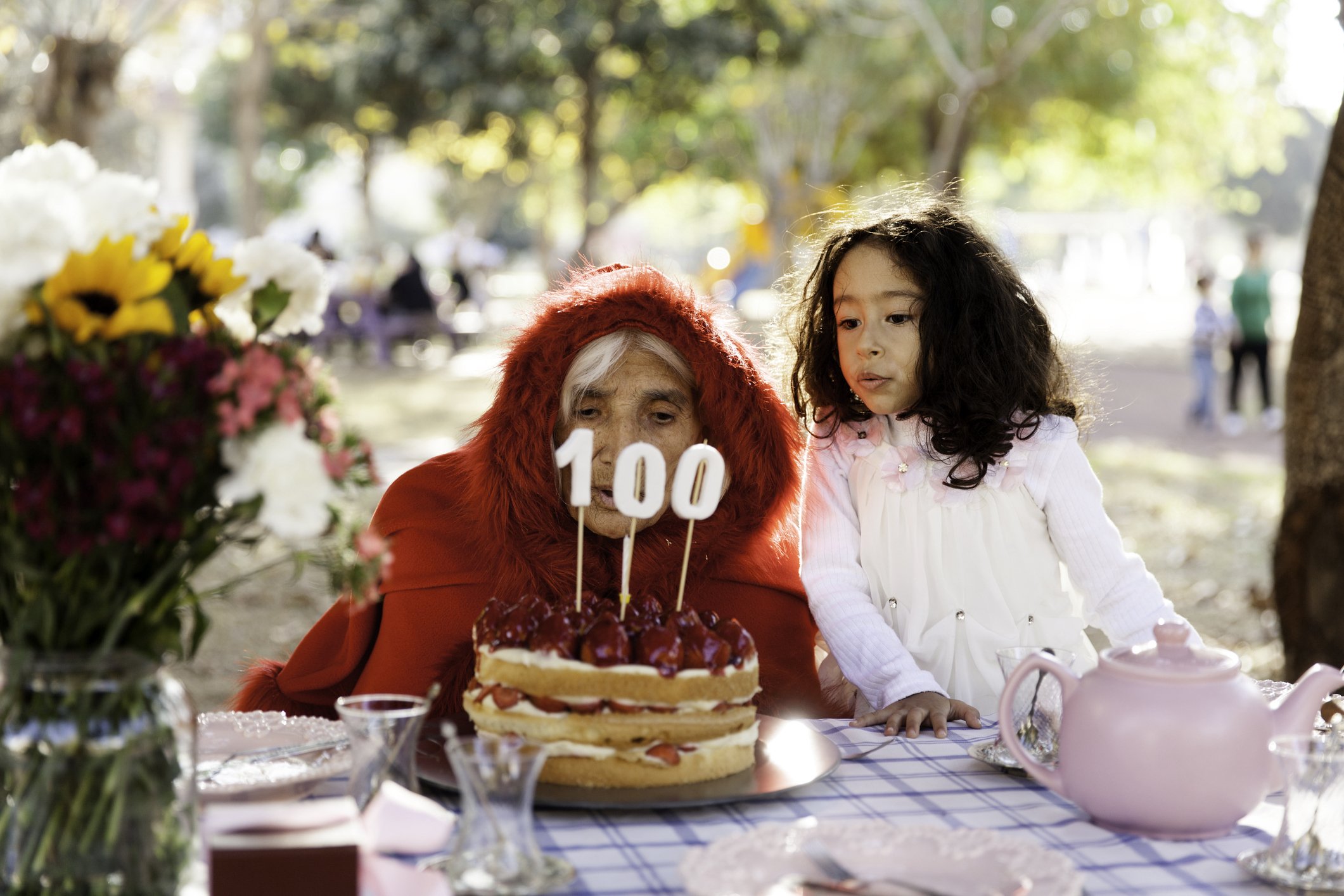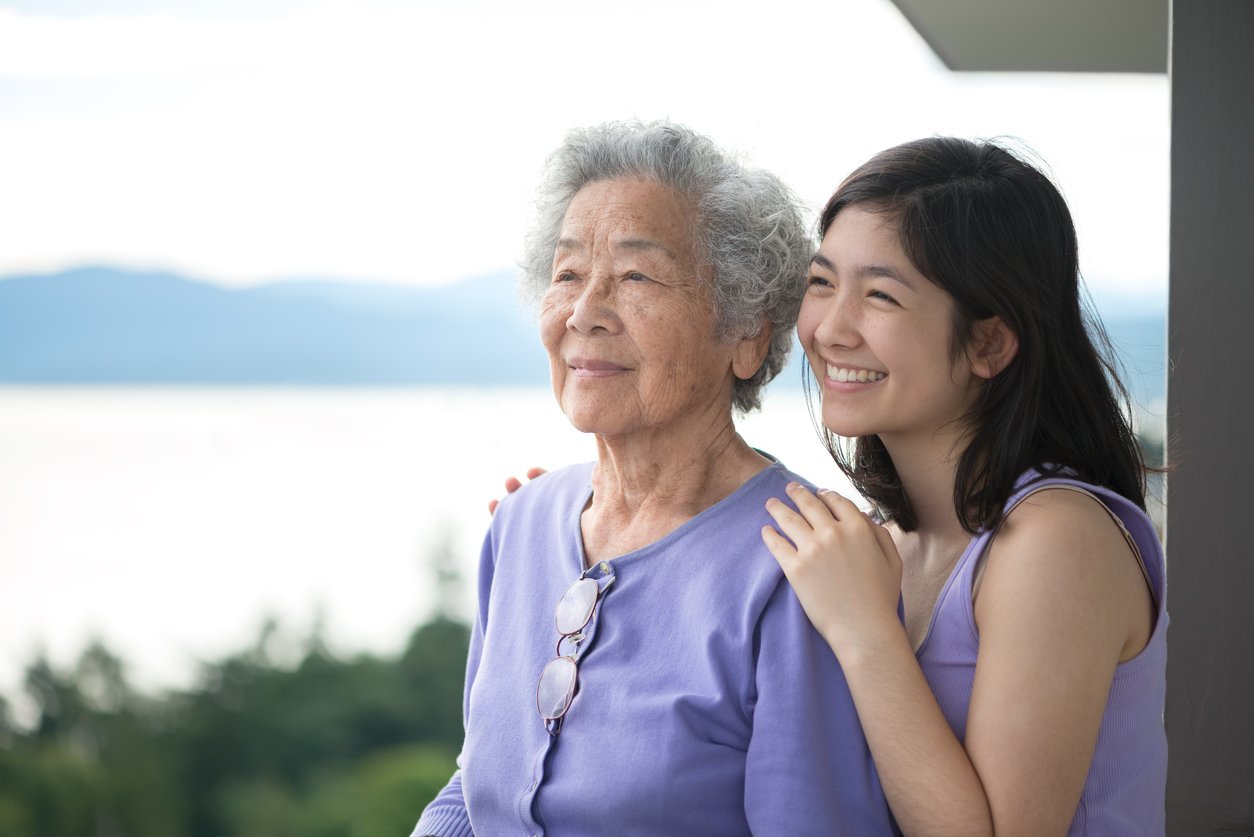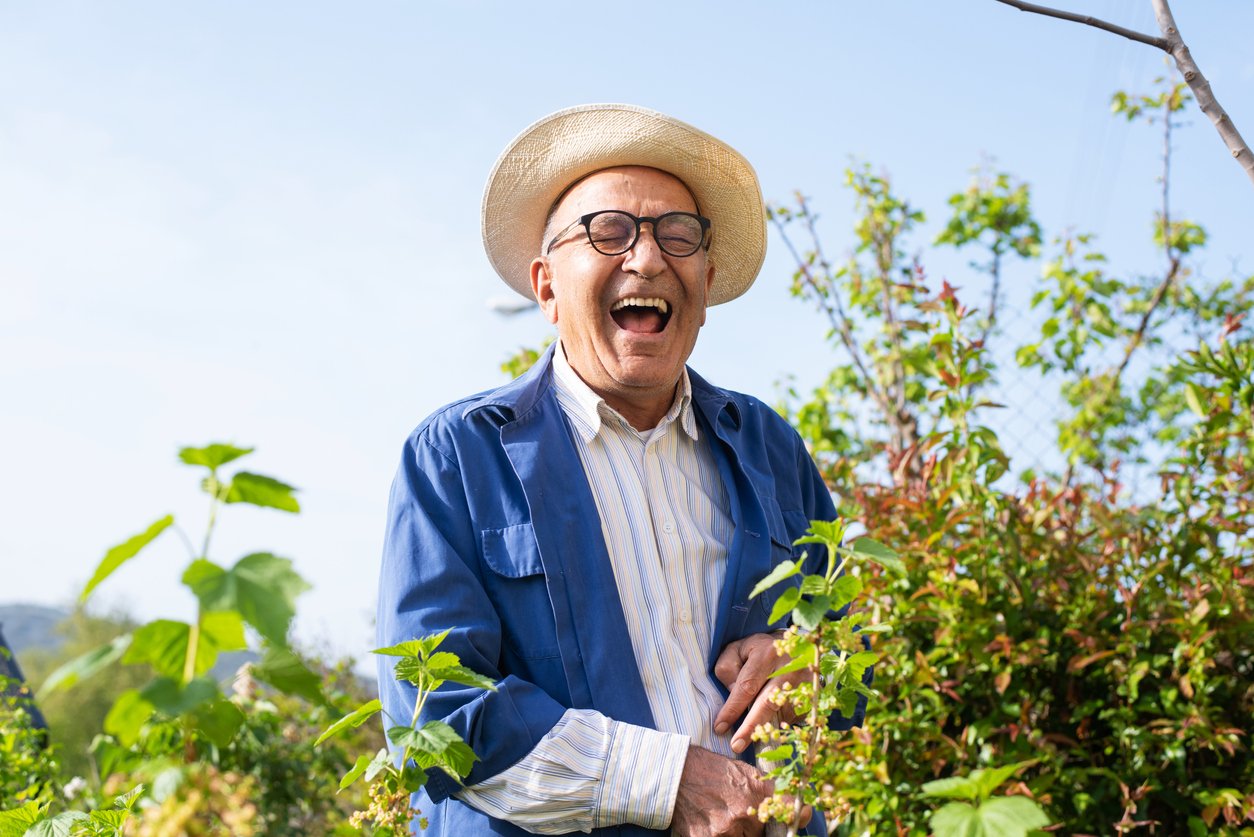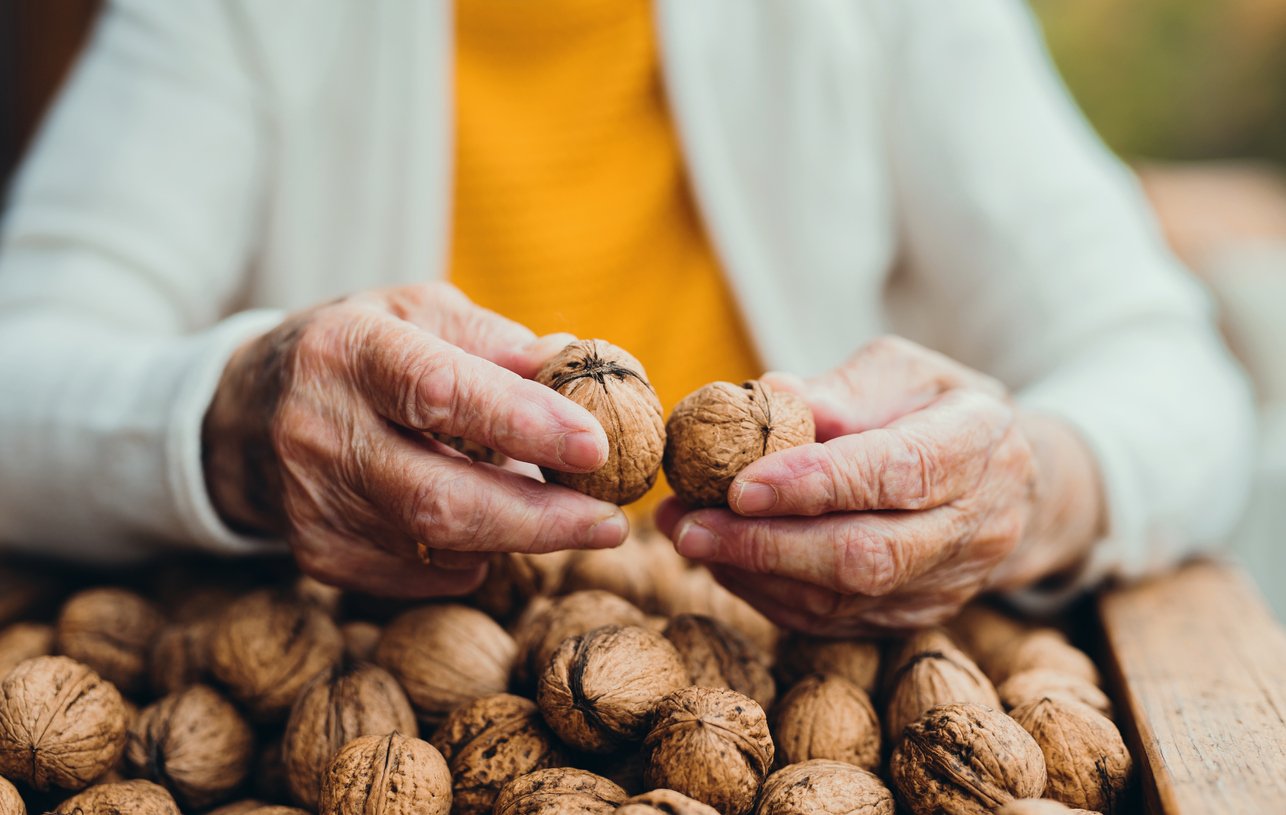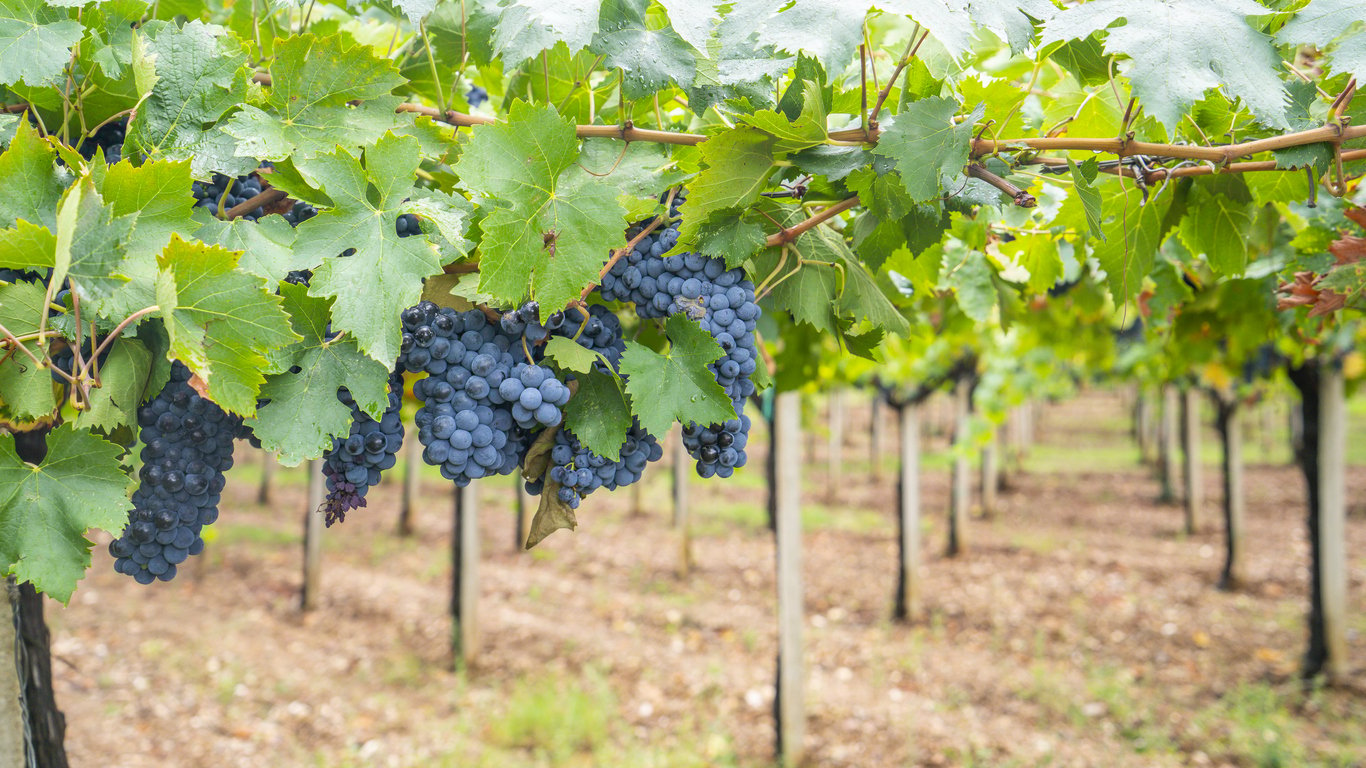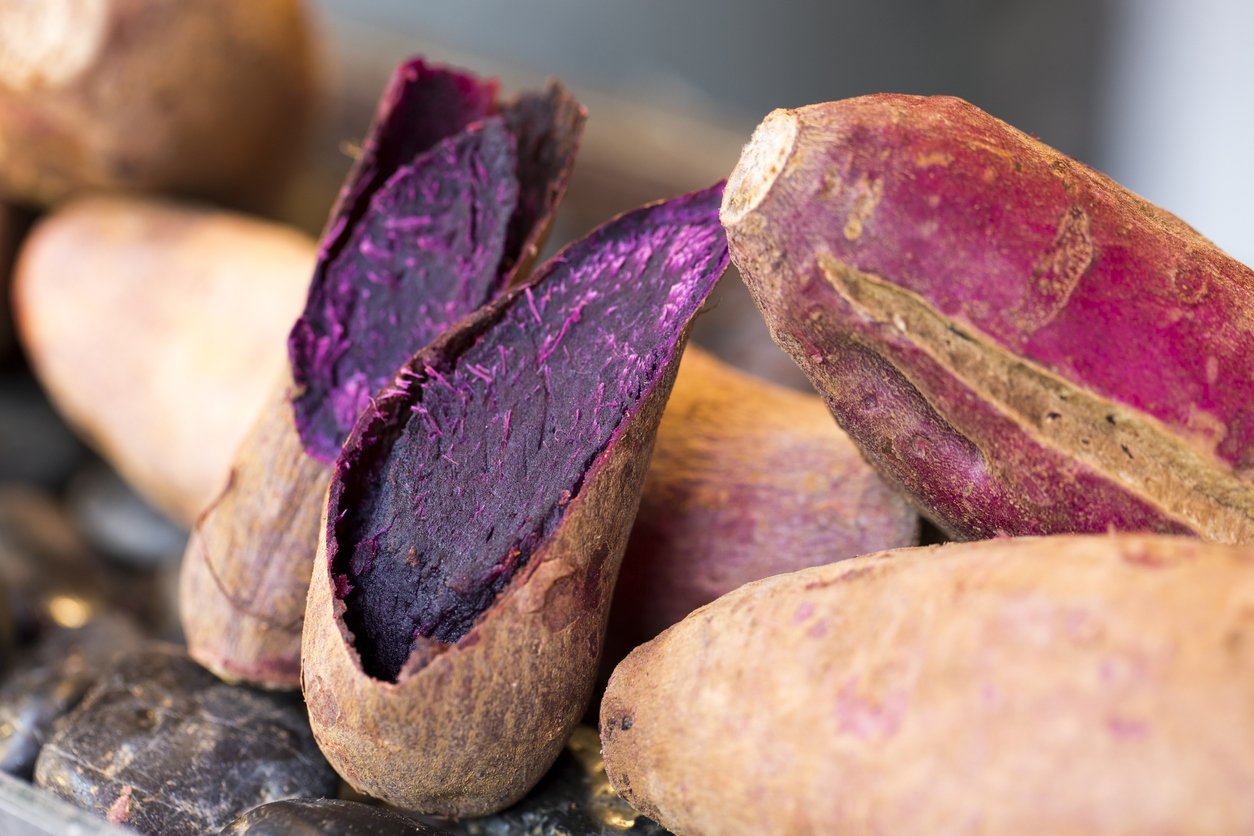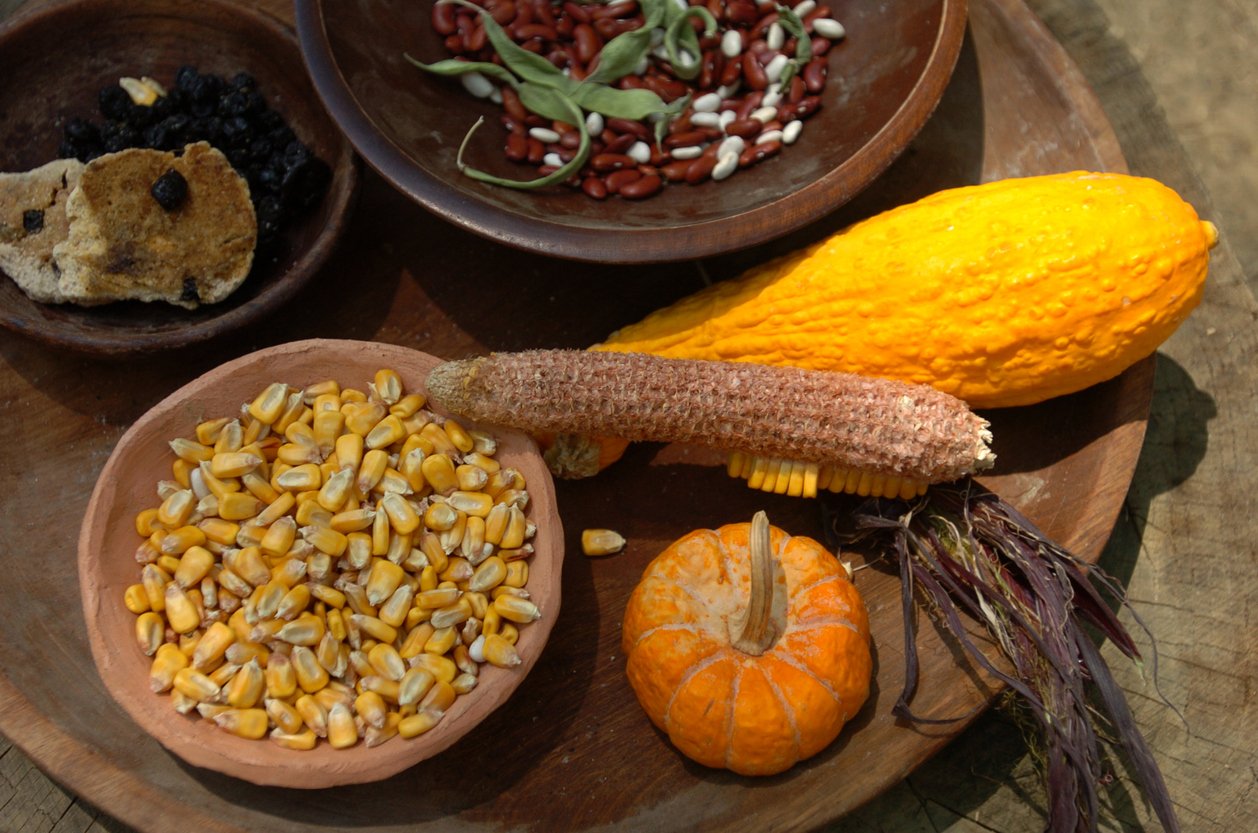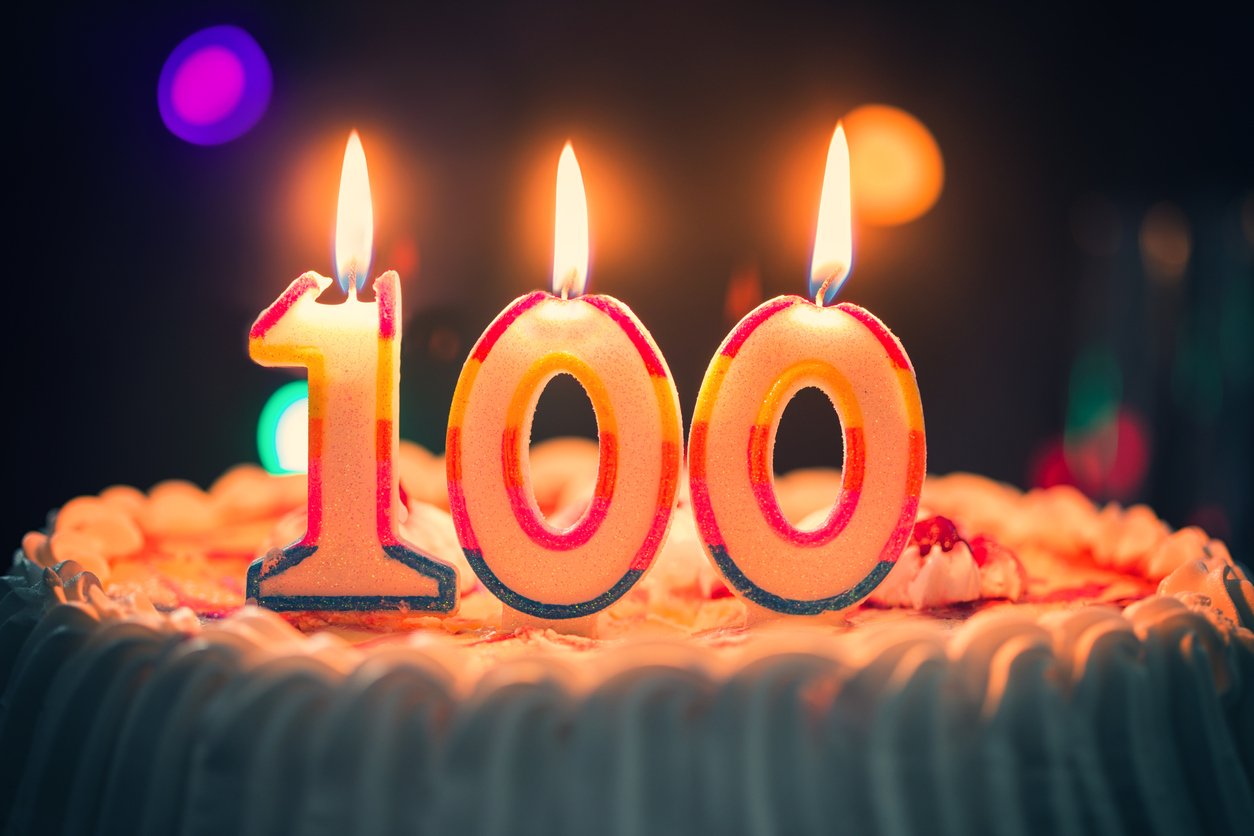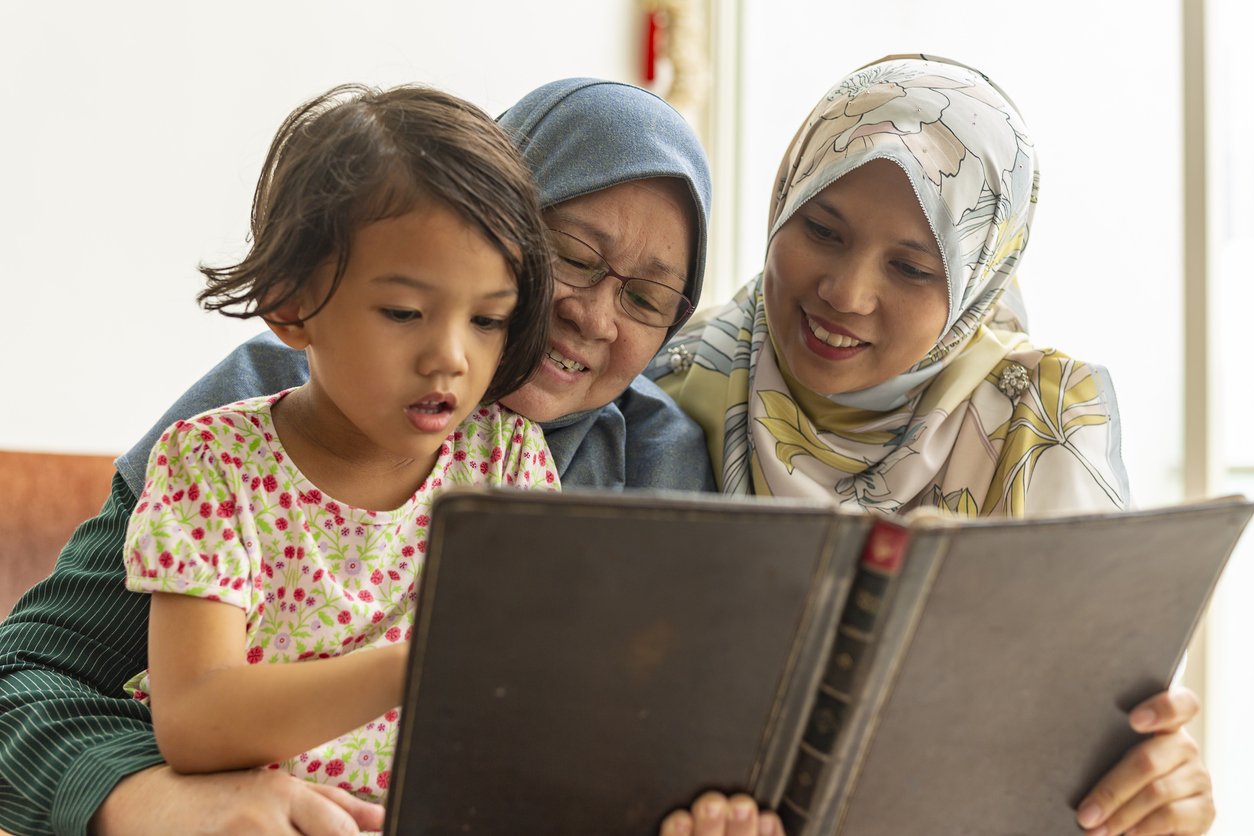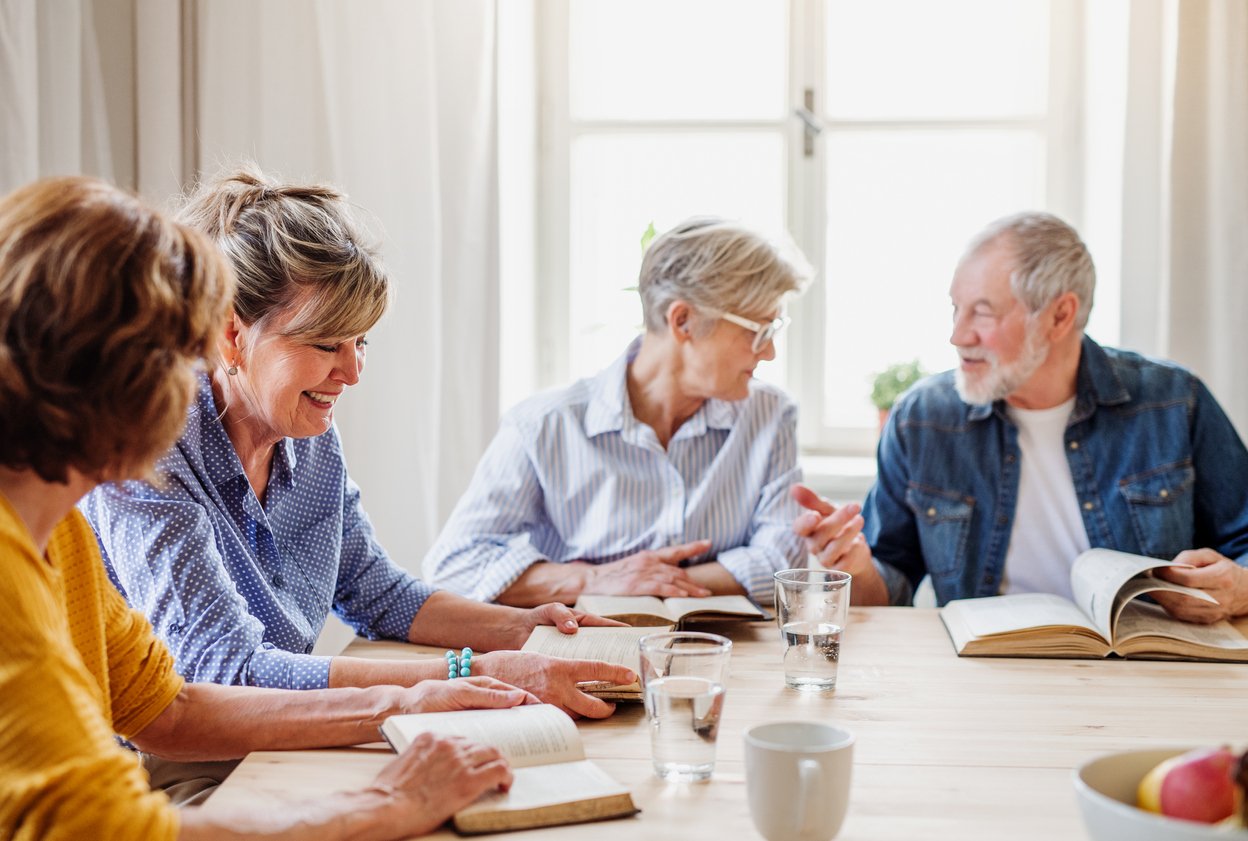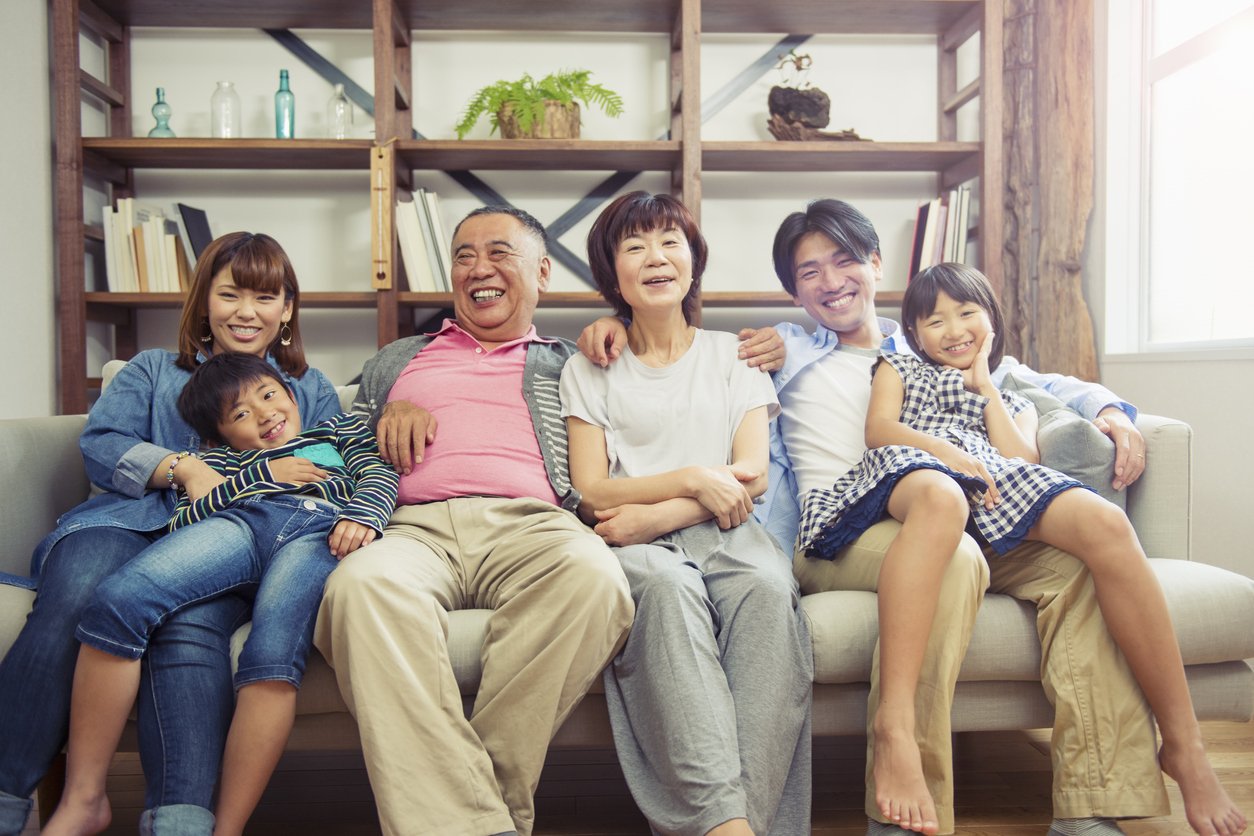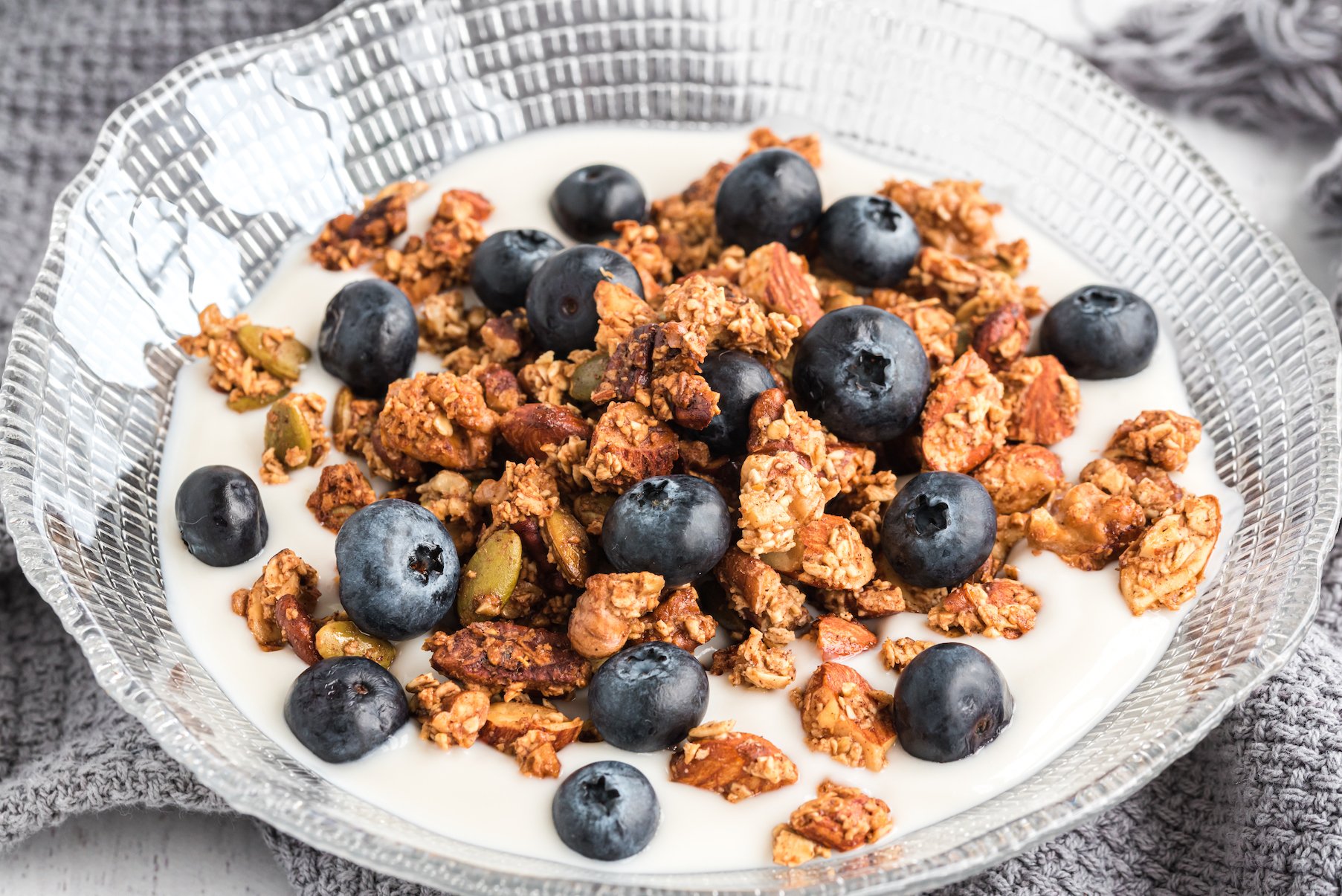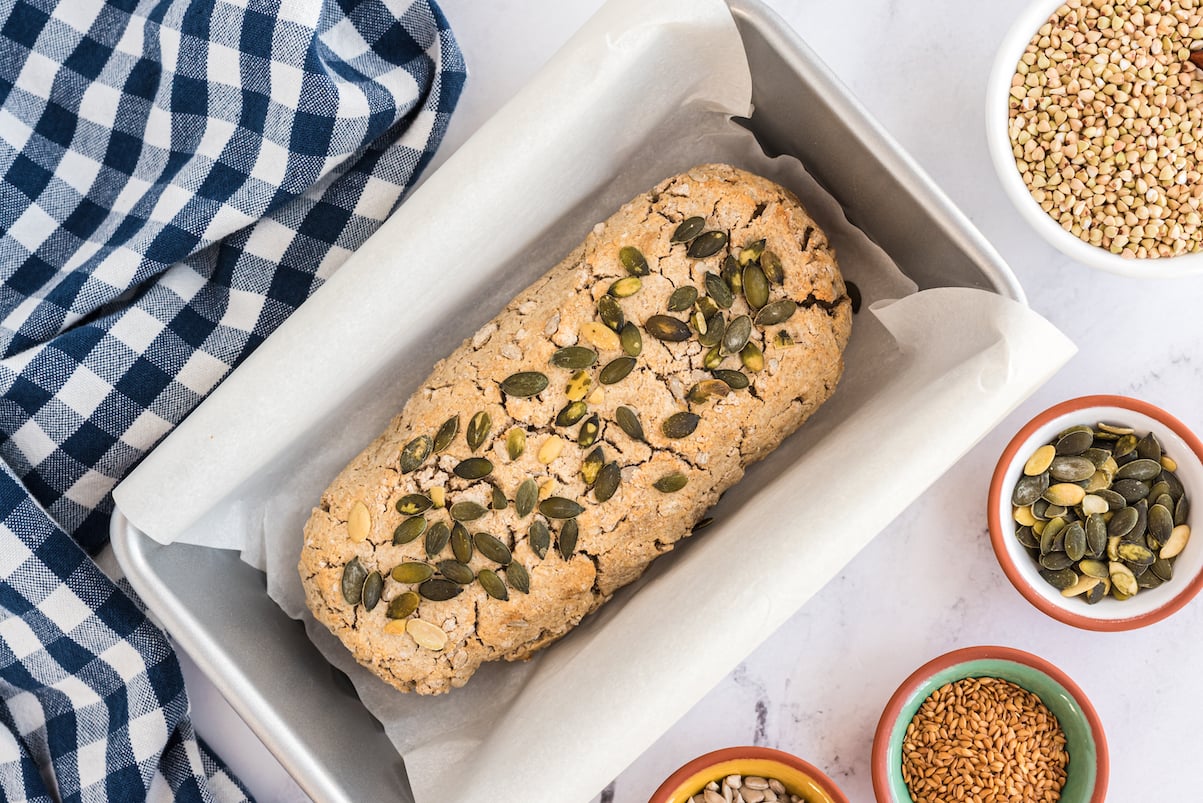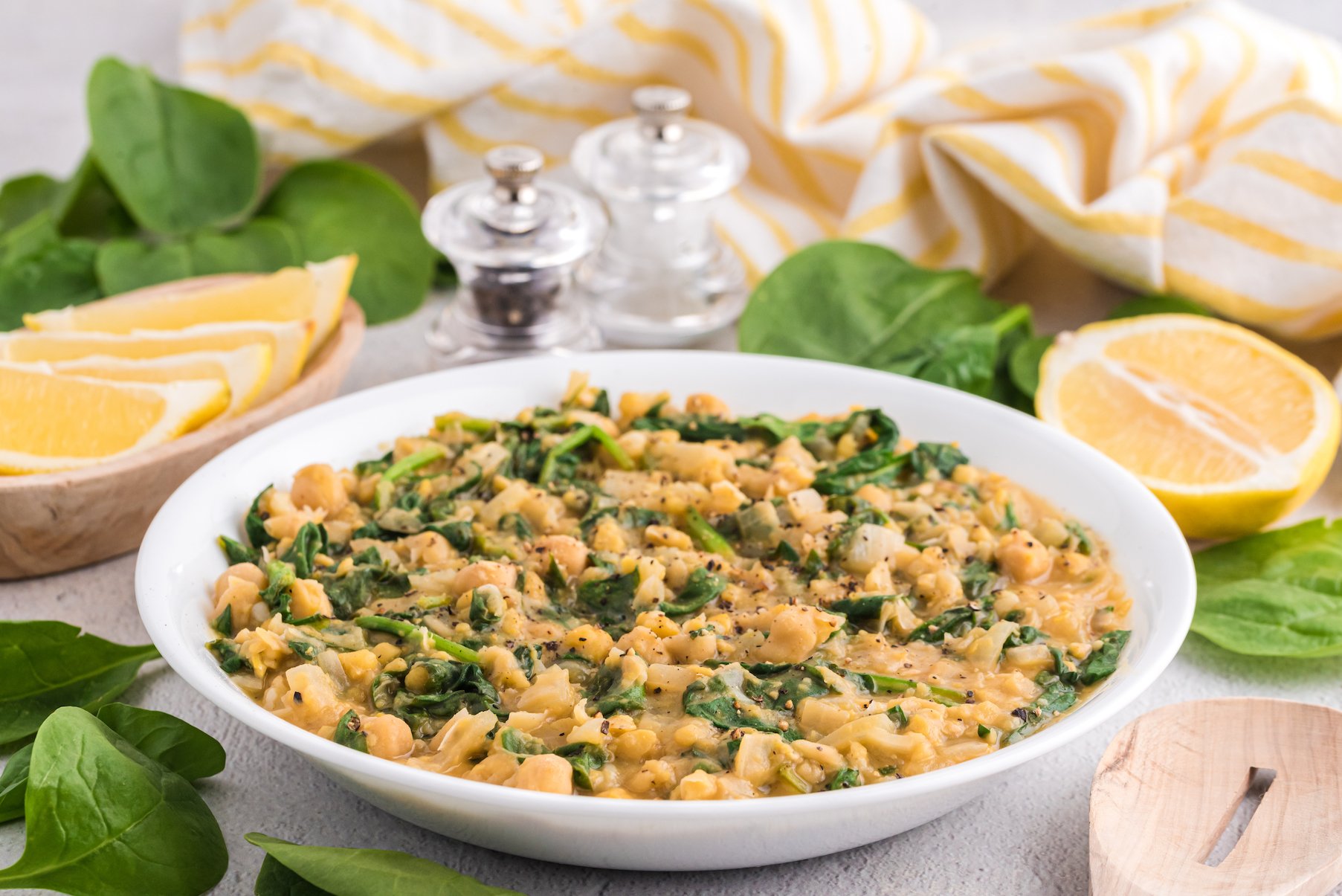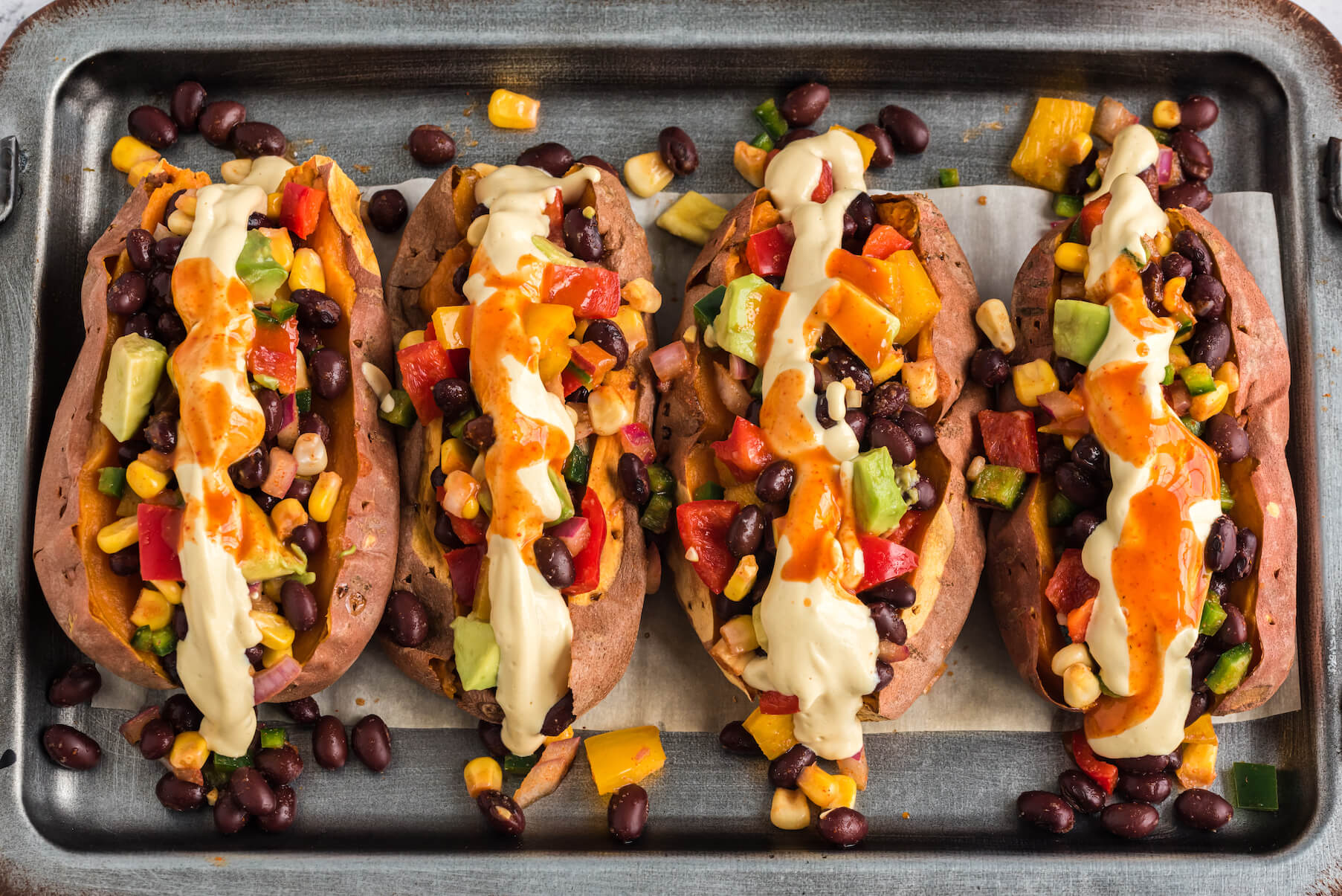In 1959, the eminent physicist Richard Feynman gave a lecture at Caltech that he titled, “There’s Plenty of Room at the Bottom.” The main idea he presented was the potential for manipulating matter on an atomic scale, and how that might change science and the world. Feynman imagined a new field, nanotechnology, that could create designer atoms that would do whatever we wanted them to. One use case he envisioned was what he called “swallowing the surgeon” — the creation of a microscopic surgical robot that could be swallowed, piloted to the site of a health problem, and set to work to correct it.
Subsequent advances in nanotechnology have some futurists predicting the end of death sometime in this century. And just in case that doesn’t work out, many technologists are cheering efforts to build computers sophisticated enough to accommodate human consciousness. Someday soon, they insist, we’ll all just be uploaded to the cloud when our bodies fail, and either experience the universe as an immersive simulation or get transferred to some other organic body for the next phase of life.
That’s all very interesting, and maybe I’d want to live in a world where such things are possible (or even commonplace) — I’d have to think about it. But for right now, I’m not after literal immortality. I just want a long and healthy life, surrounded by loved ones, doing work that matters to me.
Cracking the Longevity Code
The good news is that we humans have already cracked that code. Many times over. In far-flung parts of the planet, a number of societies have arisen that have created a quality of life conducive to vital and vigorous longevity. My dad, John Robbins, wrote about four such places in his 2007 book, Healthy at 100. And additional research over the intervening 15 years has reinforced what he learned and found more communities where an unusual proportion of citizens are still vibrant and active past their hundredth birthdays.
A National Geographic team, including author Dan Buettner, has studied five of these places, which they dubbed “Blue Zones.” Not only did they quantify and verify the longevity claims, but they also conducted sophisticated statistical analyses to identify common factors that contributed to those long and healthy lives.
In this article, we’ll look at the Blue Zones research, and highlight things you can do to improve the quality and, possibly, length of your life. And as some of the factors are social rather than individual, when you make some of these changes, you may also increase the odds of the people around you gaining years of healthy and fulfilling lives, as well.
The “Fight” Against Aging
Most of us fear getting old and stress out about the prospect. In an industrialized society in which things change incredibly quickly, being old is no longer seen as a qualification for wisdom and value. Instead, the idea that aging renders people irrelevant and out of touch has taken hold.
And in a society that sometimes seems to worship youth, many of us bemoan the physical limitations that accompany aging. We peer into a bleak future of deteriorating health, increasing pain, and physical and cognitive limitations. We may anticipate boredom, loneliness, or even neglect by a world infatuated with the new.
And despite the fact that all of us — the fortunate ones, anyway — will age, there’s a strong societal stigma against it. There’s a reason so many products are touted as “anti-aging” — our society is seriously frightened of aging, so much so that we consider it a disease rather than a normal and natural stage of life, which, like all other stages of life, has its own challenges and difficulties, and also its own gifts and blessings.
Your View on Aging Matters
When you visualize an old person, what words come to mind that describe that person? A rather typical list for someone in our society might include words like: “Senile. Slow. Sick. Grumpy. Irritable. Stubborn.” Words or phrases like that are characteristic of how our society often views the elderly.
But it might surprise you to learn that in some other cultures it’s a very different story. Becca Levy is a Professor of Epidemiology at Yale School of Public Health, and a Professor of Psychology at Yale University. She writes that when she asked people in China to describe an old person, the most common response was “wisdom.” In contrast, when she asked people in the US to describe an old person, the first image that came to many was “memory loss.”
It’s important to look at our prejudices about aging, because the fear of aging can become self-fulfilling. Evidence tells us that simply believing that aging is bad can be damaging to your health. As we age, this bias takes a toll on our self-esteem, our dignity, and also our health.
Adding Life to Your Years
Up until very recently, modern society has been steadily extending people’s lives for over a century. Advanced medical technologies may keep people alive longer today, but they rarely add quality of life to those years. The result is we’re living longer — with an increased lifespan — but our “healthspan,” the number of healthy years we get to experience, is actually decreasing.
There’s reason to think our current medical paradigm may be reaching the limits of its effectiveness. In the US, life expectancy has actually been decreasing over the past several years. This is partly due to COVID-19, and partly due to the opioid crisis, but it’s also because those losses haven’t been offset by gains brought about by new technologies.
While longevity and computer consciousness researchers look to an uncharted future for the “cure” for aging and even death, I find value in looking at societies where healthy aging is the norm. These are cultures where people fully expect to remain strong and healthy well into their 80s and 90s, and where it’s common to find people who are literally healthy at 100 (which is why my dad titled his book, Healthy at 100). So let’s explore them, looking for lessons for our society.
Spoiler alert: We’re going to see that longevity in these cultures isn’t linked to self-denial and abstinence, but rather to pleasure, social connection, meaningful work, and delicious, healthy, life-giving food and drink.
What Is a Blue Zone?
In 2004, Dan Buettner joined a National Geographic expedition to uncover the secrets of human longevity. They wanted to know not just where people lived the longest, but what the healthiest lifestyles were that contributed to their longevity and vitality.
The concept of a “blue zone” — and the name — grew out of demographic work by researchers Gianni Pes and Michel Poulain. They drew blue circles on maps to highlight regions of extreme longevity and referred to the areas inside the circles as Blue Zones.
Building on that demographic work, Buettner and his team identified five major Blue Zones. Using epidemiological data, statistics, birth certificates, and other research, the team verified the unusual distribution of ages that showed how common it was to live for 100 years or more. They found that someone living in a Blue Zone is 10 times more likely to reach 100 than a person living in the United States as a whole.
Places With the Most Centenarians (and the Characteristics that Contribute to Longevity)
Buettner and his collaborators have been studying Blue Zones for almost 20 years now, and have amassed a treasure trove of data. Not just about how long people live, but about what factors contribute to their extended healthy lives. Now let’s take a look at each of these five Blue Zones, and explore some of the qualities and commonalities among the people who live there that distinguish them from people in industrialized and postindustrial societies.
Ikaria, Greece
Ikaria is an island where, according to legend, people “forget to die.” And that’s just a slight exaggeration — one in three Ikarians make it to their 90s. Their rates of chronic disease are low, and dementia is almost unheard of. So how do they do it?
Let’s start with diet. Most Ikarians keep a garden, which provides not just exercise and exposure to the outdoors, but local and organic plant-based calories. Their diet is mostly plant-based, with a Mediterranean pattern that’s roughly 37% greens and other vegetables. They also eat lots of whole grains, beans, and potatoes. And they drink teas brewed from domesticated and wild local herbs, including rosemary, oregano, and sage.
Their Greek Orthodox practice sanctions many fast days per year, which means they’re practicing constant caloric restriction (one of the few interventions that consistently increases lifespan in animals).
Ikaria is a mountainous island, which necessitates plenty of vigorous movement just to get around from one place to another. No need for spin classes or aerobics — just going about daily life on Ikaria keeps residents fit.
That said, residents of Ikaria aren’t going full-out all the time. They enjoy their rest periods, including a daily midafternoon break. They don’t rush around trying not to be late for appointments. Instead, they embrace a more relaxed pace of life. Sometimes they stay up well past midnight playing dominoes and fostering social connections, and sleep in til later the morning.
Loma Linda, California
The 24,000-person town of Loma Linda, California is the only Blue Zone located in the US. Despite living mostly typical American lives, with cars, shopping centers, and stressful jobs, the people here live a full decade longer than other Americans. They also have a lower average body mass index, which correlates with all kinds of positive health outcomes.
Their distinguishing feature is their religion. The vast majority of Loma Linda residents belong to the Seventh-day Adventist church, a Christian denomination that puts a heavy emphasis on healthy living. Adventists typically avoid alcohol and caffeine — and don’t smoke. Beyond these no-nos, many adherents follow a vegetarian or vegan diet, based on a verse in chapter one of Genesis: “Behold, I have given you every herb bearing seed, which is upon the face of all the Earth, and every tree, in the which is the fruit of a tree yielding seed; to you, it shall be for meat.”
Many Adventists interpret this verse to describe a primarily fruit- and vegetable-based diet as the ideal human way of eating. Many who do eat meat do so in small quantities, as a side dish rather than the main course.
For a snack, some Adventists prefer nuts, which is a good idea healthwise. Studies show that Adventists who eat nuts at least five times a week have cut their risk of heart disease in half, and live about two years longer, compared to Adventists who aren’t so into nuts. They typically enjoy a light, early dinner, which is another dietary pattern associated with good health.
Along with clean eating, Adventists prioritize regular, gentle exercise, such as long walks. They observe a weekly Sabbath, a day in which they rest from earthly pursuits and focus instead on family, God, camaraderie, and nature. They often volunteer for meaningful causes, which provides a strong sense of purpose.
The Alzheimer’s rates among the Adventist population in Loma Linda are also among the lowest in the world. This is particularly striking because there are neighborhoods just on the outskirts of Loma Linda where people don’t follow the diet and lifestyle practices of the Adventists, and as a result, have vastly higher rates of dementia.
Sardinia, Italy
A cluster of several villages on the Italian island of Sardinia demonstrates the potent synergy of nature and nurture to promote health. Most of the inhabitants have an otherwise rare genetic marker, called M26, that’s linked to exceptional longevity. And they also enjoy a health-promoting lifestyle that takes full advantage of their genetic potential, with nearly 10 times more centenarians per capita than in the US. Unusually, a large percentage of Sardinian men make it to 100.
Again, we see a primarily plant-based diet in action, with whole grains providing about half of all calories. Meat and added sugar, which are so prevalent in industrialized societies, are rare treats rather than staples. Mostly, they eat homegrown and homemade foods, in what many Americans would consider a minimalist diet. But they also enjoy a traditional red wine called Cannonau, which they source from a native grape.
Because they are a shepherding culture, Sardinians walk a lot as a natural part of their work and daily routine. Family is important in Sardinia, and the culture there celebrates elders, involving them and valuing their experience and wisdom.
Okinawa, Japan
When researching Healthy at 100, my dad stumbled upon an amazing statistic about the Japanese island of Okinawa — despite being home to just 0.0002% of the world’s population, they boast 15% of the world’s supercentenarians (people over 110). The island also has the world’s longest-lived women.
They also have very low rates of cancer, heart disease, dementia, osteoporosis, and other chronic health conditions.
Traditional Okinawans eat — you guessed it — a primarily plant-based diet, consisting mostly of purple Okinawan sweet potatoes, rice, whole soy products, and other veggies. And they don’t stuff themselves with all this goodness. Following the dictum “hara hachi bu,” they stop eating when they’re about 80% full.
Almost all Okinawan centenarians grow — or once grew — a garden, often including medicinal plants. In addition to the benefits of the food and herbs grown there, gardening has them spending time outside each day, which helps them maintain optimal vitamin D levels year-round.
Traditional Okinawans maintain a powerful social network called a “moai.” Unlike digital social networks, the moai is a collection of close friends and family who interact with each other on a regular basis, in person, for the good of all. It’s both a social and economic safety net, and reduces stress and loneliness, two of the most insidious drivers of ill health.
Additionally, Okinawans are motivated by a strong sense of purpose in life, which the Japanese call “ikigai.”
Nicoya, Costa Rica
Most inhabitants of the Nicoya peninsula in Costa Rica live to at least 90. As they age, they maintain their social networks, and tend to stay under the family roof, living with their children and/or grandchildren, and remaining active and useful. Many of these centenarians attribute their longevity to having a “plan de vida,” or strong sense of purpose in their lives.
As with the other Blue Zones, Nicoyans eat healthy, plant-based diets, in their case based on the traditional Mesoamerican “three sisters” — squash, corn, and beans. They eat many fruits and vegetables that they grow themselves, and go light on the meat. They also eat small dinners.
And they enjoy physical labor, typically performed outdoors, as their main form of exercise.
How to Live to 100
So what can you learn from these varied Blue Zone communities if you want a long and healthy life? Should you move to an island, live in the mountains, and take up gardening? Maybe drink herbal teas and eat purple sweet potatoes?
The thing is, there are a million variables at play here, and it’s easy to get hung up on isolated details out of context. After all, that’s how our media tends to report on health — this particular food cures cancer, here’s the perfect 7-minute workout, and so on.
But the Blue Zones are challenging to researchers because they aren’t controlled experiments with one or two variables. Rather, they’re dynamic environments that contribute in a holistic way to people’s life experiences and health outcomes. So we need to zoom out from the specifics, as important as they can be, and also identify some of the broad patterns that play out in each of the regions under study.
And remember that there are no guarantees — it’s always possible to be hit by the proverbial bus (unless you live on an island that has no buses, I guess) or develop disease despite your best efforts. But while we may not all be privileged to live to 100, we can certainly take away insights from Blue Zones lifestyles that, if we implement them, will help us live far healthier lives than is the norm in our society. So let’s look at the things the Blue Zones have in common. What should you do if you want to live more like the people in these societies do?
Exercise and Longevity: Move Naturally
In other words, build movement into your routines of daily life. “Workouts” and “exercise” are great, but also seek to move on a regular basis as part of your way of life. I sometimes think we’ve become physically the laziest and most sedentary people in history. Our ancestors would never have survived if they were a tenth as inactive as many of us are today. In contrast, in each of the Blue Zones, the way people live — gardening, farming, shepherding, walking up and down mountains — both necessitates and produces a high level of physical fitness.
If you want to live longer, become and remain physically active. You’ll sleep better, you’ll feel better and be less prone to depression, and your health will improve in countless ways. And exercise can also help prevent prediabetes from developing into type 2 diabetes.
Find Your Purpose
The Okinawans and Nicoyans, in particular, exhibit a strong sense of purpose, a “why” they wake up every morning. This sense of being needed is easier to come by in the Blue Zones, where the communities integrate elders and value their contributions.
Having a purpose, whether it’s to support family, take care of the land, do the bidding of God, or some other reason, keeps people going when others might give up on living. According to Blue Zones research, knowing your purpose and living in accord with it can contribute up to seven years of extra life expectancy.
If you live in a society that doesn’t value and integrate elders, you’ll need to find and act on your own purpose. Look for volunteer opportunities and other opportunities to be of service to others. If you serve on the board of a charity or social welfare organization, see if you can include older people in setting and carrying out your mission.
Downshift and Manage Stress
Stress is a natural and inevitable part of life. What’s unnatural is never taking time to unplug from it, or engaging in practices to recover and reset. We know that excess and chronic stress can seriously damage your health by laying the groundwork for persistent inflammation that’s linked to chronic disease.
Blue Zone cultures build stress management into daily routines.
First, they tend to produce less stress because they aren’t “on the clock” all the time, experiencing “time scarcity” and always rushing around.
Second, social interactions themselves can reduce stress by triggering social engagement that can replace the neurological “fight or flight” response.
Third, they take frequent breaks for reflection or pause. Okinawans take a few moments each day to bring to mind their honored ancestors: Adventists pray, Ikarians nap, and Sardinians enjoy happy hour. They also use some homegrown herbs — in foods, drinks, or as medicines — to help to relieve stress.
What can you add to your day to ease the stresses of life?
Follow the 80% Rule
The Okinawan practice of eating only until 80% full is a great example of moderation in eating. This one rule could be the difference between gaining weight or maintaining a slim and healthy physique.
Not everyone in every Blue Zone follows this practice specifically, but all Blue Zone cultures emphasize moderating food intake in some way. For example, the smallest meal is usually eaten in the late afternoon or early evening, after which people fast until breakfast (now I hear it — “break fast”).
Fasting is also a part of Blue Zone lifestyles. There are many different types, including single-day, multiday, partial, and intermittent. In addition to aligning with deeply held spiritual beliefs, fasting has a number of health benefits.
And there’s a clear link between overeating and stress, often acting in a disempowering vicious loop that creates digestive problems and obesity. Noticing fullness and stopping at the first sensations of satiety is one powerful way to break the cycle.
Eat Mostly Plants
People in the Blue Zones and other long-lived areas follow a primarily plant-based diet. Staples of Blue Zone diets include vegetables, fruit, whole grains, legumes, and nuts and seeds.
As a lot of research has shown by now, plant-based diets are among the healthiest ways of eating, and can help prevent and stop the development of chronic disease.
Most of the Blue Zone diets aren’t entirely vegan, with the exception of a subset of Seventh-day Adventists in Loma Linda. But while they include some meat and dairy, animal foods typically make up a small proportion of their diets, are locally sourced, come from animals that graze in pastures rather than live in feedlots and factory farms, and are often reserved for special occasions like holidays and life cycle celebrations.
For example, traditional Okinawans source about 5% of their diet from meat and dairy, while these foods comprise over 30% of the diet of the average American. Also, Blue Zone residents typically grow or raise the majority of their food, and they rarely if ever consume the ultra-processed foods that make up almost two-thirds of the food eaten in the modern Western diet.
Plus, their diets are low in calories compared to others, with an average of about 1,900 per day — far less than the 3,600 calories that the average American puts away on a daily basis.
Drink Alcohol in Moderation (or not at all)
People in Blue Zones — except Loma Linda Adventists who don’t drink at all — drink alcohol in moderation. This looks like 1–2 glasses per day, always with friends, and as part of meals. While alcohol in moderation may relieve stress and lubricate social interactions, there are other ways to achieve the same effects without drinking, if you so choose.
I say this because there’s a lot of evidence that alcohol consumption is a net negative for health, and has been shown to increase your risk for several chronic physical conditions, as well as mental illness, and even death.
So if you live in a Blue Zone where you have a daily glass of locally produced wine as part of a leisurely and social dinner, that’s one thing. But please don’t take up drinking to live longer if it means downing a few beers in the evening while watching TV. This is a case where context really matters.
A Sense of Belonging
Just about all the centenarians interviewed as part of the original Blue Zones research belonged to a faith-based community. And while it’s impossible to disentangle belief in a benevolent deity from simply belonging to a community of like-minded people, we do know that “a sense of belonging is a significant predictor of mental health and well-being in later life.”
In older adults, specifically, research shows that a low sense of belonging is associated with depression, suicidal ideation, and hopelessness.
If being part of organized religion isn’t your thing, don’t despair — belonging can take many forms. You can connect with family and friends, participate in a group hobby like ballroom dancing, or even combine belonging with your sense of purpose by joining an advocacy group or charity that puts you in contact with others.
If you live in a society that’s fragmented, with little social connection, then you have to do some of that community building yourself. Start forming support networks, weave together neighbors and friends, and make sure to include elders now, so that you will be included when you reach that stage of life.
You can belong to the more-than-human world as well. Connecting with companion animals, or even feeling that you have a place in nature can also provide a sense of belonging.
Put Loved Ones First
Those who successfully reach 100 in Blue Zones almost invariably prioritize their families above all else. Often aging parents and grandparents live nearby or in the homes of younger family members. In modern society that may seem like a burden, but in the Blue Zones it isn’t; one of the reasons for this is that rates of Alzheimer’s and other dementias in these societies are only the tiniest fraction of what we currently experience in our society.
In terms of belonging, family often tops the list. Family connections can provide a sense of meaning and purpose, social connection, and tangible resources such as home care, feeding, and cleaning. Being connected and taken care of enhances well-being.
Hang Out With the Right Tribe
People in Blue Zones enjoy longer and more vigorous lives than most because they’re embedded in systems and structures that promote healthy lifestyles. Just being part of a real-life social network improves health outcomes. A review of 150 studies including over 300,000 participants found that people with strong social ties are 50% more likely to survive over any given time period, compared to those lacking those ties.
Blue Zone cultures, by emphasizing the community and honoring and including elders in community life, provide social circles — like the Okinawan moais — that support healthy behaviors. Research shows that behaviors and qualities that most of us think of as personal and individual — including smoking, obesity, happiness, and even loneliness — are contagious.
I hope you’ll start weaving these Blue Zones strategies into “recipes” for your long, healthy, and joyful life. There are plenty of challenges to living in healthy, nature-based, and socially connected ways in modern societies. But the more each of us strives to build and belong to a nurturing and inclusive community, the more accessible such a lifestyle becomes for everyone else.
The food factor in Blue Zone longevity may be the easiest for you to adopt, as it requires the least coordination with others. And once you’ve dialed in a healthy, plant-based diet, look for ways to join with others — parties, potlucks, gatherings, cooking demos — to bring the rest of the Blue Zone magic to life in your life.
Here are some delicious Blue Zone-inspired recipes to get you started.
Blue Zone Recipes
Gather your community to share in the joy and power of nourishing plant food, taking healthy inspiration from these tasty whole-food recipes. Using common ingredients consumed in the Blue Zones, these recipes — incorporated into your daily routine — can help you live energized like a healthy centenarian!
1. Homemade Granola with Yogurt and Berries
Pile this yummy, nutty granola on top of your favorite plant-based yogurt (we highly recommend giving our recipe a try — just sayin’!) along with antioxidant-rich blueberries for an early (or late) morning breakfast that couldn’t be simpler or more delicious. Plus, this longevity recipe is an easy way to help you reach the Blue Zone recommendation of two handfuls of nuts a day!
2. Three-Seed Fermented Buckwheat Bread
Adding fermented foods to your diet may help you unlock one of the secrets to longevity. We think that our friends in the Blue Zones would enjoy our contribution to the effort — Three-Seed Fermented Buckwheat Bread — thanks to its deliciously moist texture with crunchy seeds and a slightly sour taste from the fermentation process. Be sure to keep an eye on the fermentation time and bring your patience — the end result is absolutely worth it! Enjoy the health-boosting benefits of this yummy bread with your favorite fruit-based spread, with nut or seed butter, or alongside a hearty plant-based soup.
3. Energizing White Bean and Kale Soup
Energizing White Bean and Kale Soup might be the quintessential Blue Zone meal with its bounty of hearty beans, nourishing veggies, and comforting herbs and spices. This soup has so much wholesome goodness, and the nutrition you need to thrive in every decade of life. There is plenty of calcium from the kale, lycopene and vitamin C from the tomatoes, plant-based iron from the beans, and so many more life-enhancing nutrients that this soup will certainly add a bit of Blue Zone magic to your life!
4. Savory Chickpeas and Spinach
Beans are a dietary staple in all five of the Blue Zones, with an average serving of at least a half cup per day! Savory Chickpeas and Spinach is a bright, zingy, and perfectly spiced bean-based side that makes getting your daily dose easy and delicious. It’s also super versatile — swap the chickpeas and spinach for your favorite beans and veggies of choice to make a new combination you’ll always be excited to try.
5. Southwest Stuffed Sweet Potatoes
Gather the family to share and embrace the power of plant-proven nutrition with these longevity-loving Southwest Stuffed Sweet Potatoes. When it comes to nourishing your body, sweet potatoes are a plant-based MVP. With the addition of a protein-packed and phytonutrient-rich black bean and sweet corn medley, delightfully creamy avocado, and flavorful herbs and spices, it’s no wonder this recipe fits the Blue Zone recipe criteria.
Longevity Is Possible!
Although aging is often something that people in industrialized nations dread, due to its association with loneliness and chronic health problems, it doesn’t have to be this way. While aging is an inevitable part of life, and there are things you can do to slow the process, obsessing over stopping aging or finding some miraculous Fountain of Youth can actually stoke fears and increase dread of what’s to come.
Instead, look for things to do that can make your later years vibrant and enjoyable. By looking to the centenarians of the world in places like the Blue Zones, you can take inspiration on how to live so that you may dance your way to your “wisdom years,” whether they extend to 100 and beyond or not.
Tell us in the comments:
- What’s your favorite Blue Zone, based on the descriptions here? Which one fits your interests and temperament most closely?
- What can you do to increase your daily dose of movement in nature?
- Which of the Blue Zones strategies are already embedded in your life?
Feature Image: iStock.com/cometary
